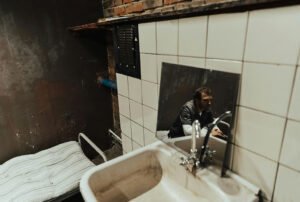
August 21, 2016, New York Times
We typically ascribe to each human being meaning and value so vast that we cannot fully comprehend it. (Poetry and music, perhaps, come closest to helping us understand.) But what happens when a doctor or nurse must prioritize care because there is an acute shortage of resources? Temporarily, at least, the value of a human being becomes measurable, and it is best to sidestep meaning altogether.
At least 18 states from New York to California, and numerous hospitals, including the 152 medical centers operated by the Department of Veterans Affairs, have already developed protocols. Some efforts, including Maryland’s, have received funding from a federal program supporting hospital preparedness. But relatively few people know about the plans for allocating scarce resources, and fewer still have been consulted.
Triage is what good and sincere doctors and bioethicists and sometimes wartime medics must mull over and face. They are forced to walk the fine line of making legitimate ethical distinctions between the terrible process of triage and explicit rationing. This is a subject that must always be approached with humility.
No one wants to exclude anyone from treatment. Circumstances sometimes require decisions be made as to who receives help first, and who later or not at all. In preparing recommendations for state officials that could serve as a national model by 2017, Dr. Lee Daugherty Biddison, a critical care physician at Johns Hopkins, and colleagues are in search of answers. It might be assumed that those most often out of luck are the people already at high risk of death. The feedback they receive from the general public on this wrenching question is not so obvious or straightforward.
Sign up for our free newsletters
Subscribe to NPQ's newsletters to have our top stories delivered directly to your inbox.
By signing up, you agree to our privacy policy and terms of use, and to receive messages from NPQ and our partners.
When there is a surge of patients from a disaster, disease outbreak or terrorist attack that overwhelms a hospital, how should care be rationed? Whose lives should be saved first? Should the triage process be based on a first-come-first-served basis? Should a random approach, like a lottery, be applied? Should children be favored over adults, especially the elderly? Should ventilators be taken from patients who are not improving? What if the patient brought his own ventilator? What should the policy be for allocating scarce organs for transplant?
Do doctors even have the time and perspective in an emergency to wrestle with these questions? During the 2014 Ebola epidemic in West Africa, doctors and nurses could spend only a few minutes at a time inside their hot biohazard suits. When Hurricane Katrina struck New Orleans, the power failed at Memorial Medical Center. After several days of agony, some medical personnel allegedly euthanized critically ill patients. A journalist and doctor, Sheri Fink, wrote about this horror for the New York Times Magazine and ProPublica, winning the Pulitzer Prize for investigative reporting.
Think about this question long enough and you don’t have opinions; your opinions have you. Most gladly have no opinions because it’s a question best left avoided. But for those who must or might cross this chasm of moral experience, it’s best to have protocols to follow that have been vetted by thoughtful experts such as Dr. Biddison and that benefit from the input she receives from her focus group discussions with the general public.
Ruth Faden, the founder of Johns Hopkins’s Berman Institute of Bioethics, which participated in the project, said she saw value in the exercise far beyond a pandemic. “It’s a novel and important attempt,” she said, “to turn extremely complicated core ethical considerations into something people can make sense of and struggle with in ordinary language.”
—James Schaffer













